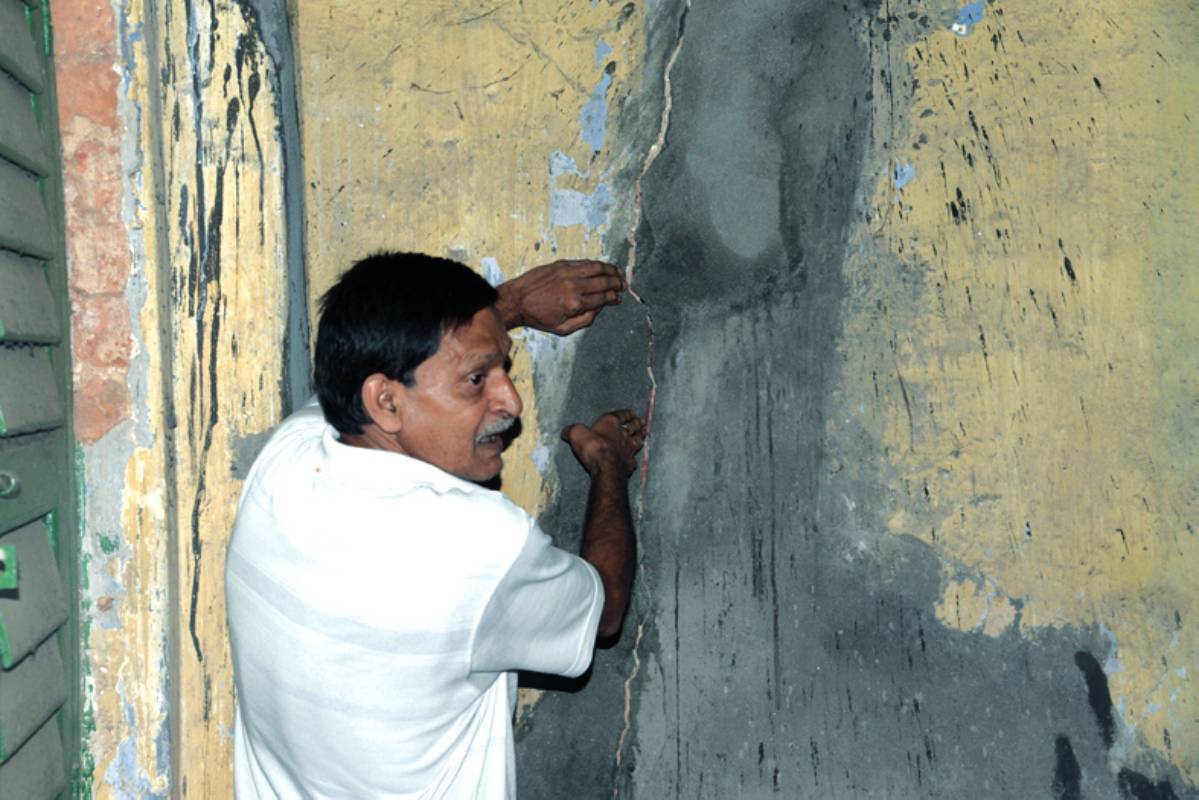Another building collapse scare at Bowbazar
Hammers on an under-construction building brought the residents of the adjacent building under the open sky in scorching heat this morning.
About 87 residents had to be evacuated and shifted to city hotels in the wee hours after around nine buildings witnessed fresh cracks last night.

Almost 33 months after the tunnelling disaster, residents of Bowbazar witnessed a re-run of the horror as fresh cracks appeared on the houses.
About 87 residents had to be evacuated and shifted to city hotels in the wee hours after around nine buildings witnessed fresh cracks last night.
Residents of Durga Pithuri Lane had barely had a few hours of sleep last night, when a knock on the door brought the news that their house needs to be evacuated immediately to avoid a mishap due to the ongoing Metro work of the East-West Metro corridor, near their house.
Advertisement
According to the residents of the area, they had started feeling vibrations from last evening. As the night progressed, wide cracks became wider with every passing hour and brought apprehensions among the residents of the area. With a drowsy mind and half-conscious senses, the residents stepped out of their house at around 2.30 am. Tension gripped the narrow and congested lanes of the central Kolkata that were brimming with crowds while a large contingent of police along with local councillor and MLA, who struggled to keep the aggrieved residents at a safe distance.
According to the Kolkata Metro Rail Corporation (KMRCL), the cracks in the nine structures had appeared due to ingress of water in the tunnel from 11 different points in the last leg of the East-West Metro. “The retrieval shaft has two sides-Sealdah and Esplanade where the two circular tunnels are joined to a cuboid-shaped box. While the joining point of the Sealdah side tunnel with that of the box is planned as the box was constructed first and the tunnel boring machine passed through it. On the Esplanade side, it was an accident and the circular tunnel existed before. The exterior structure at this point could be built only till the crown of the tunnel and not below it,” explained the project director, NC Karmali.
The KMRCL engineers agreed that the stretch of nine meters was vulnerable as no temporary structures could be built there and it was blind spot. The engineers could not see what was taking place with the soil at the blind spot and the place did not have any structures but grouting materials and there was water ingress at 11 points, despite the efforts. Of the 11 spots, 10 have been sealed while water is getting in through one place. Experts from Mumbai are to arrive in the city while the KMRCL is carrying out the grouting work on war-footing.
Advertisement